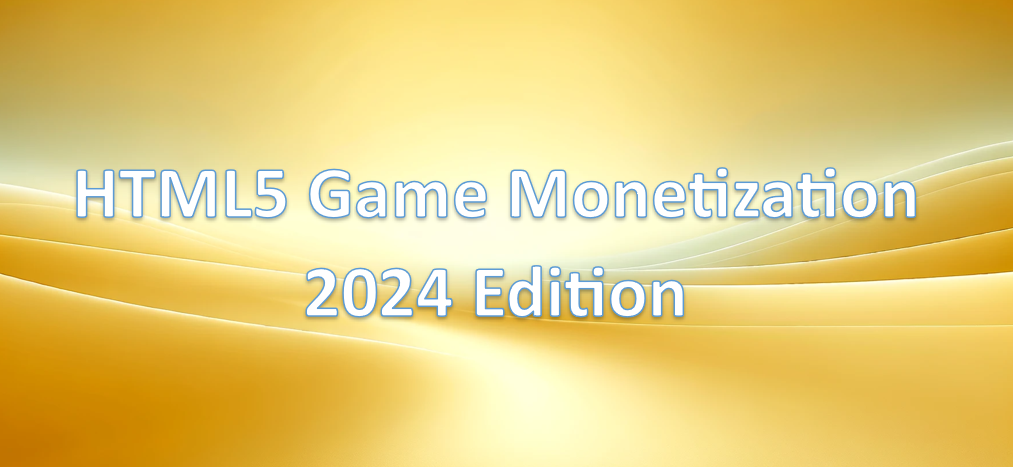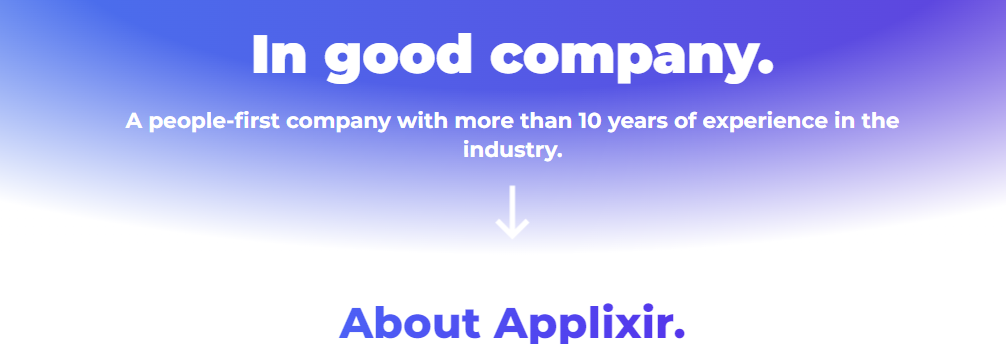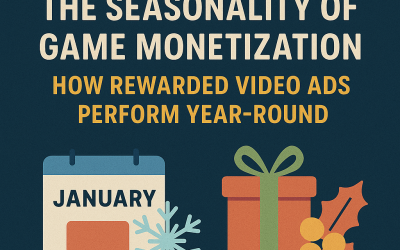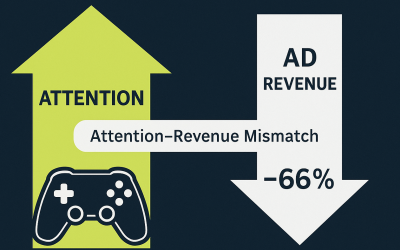HTML5 Game Monetization – 2024 Edition
Contents
- 1 Introduction
- 2 Introduction to HTML5 Games
- 3 Overview of HTML5 Gaming Industry in 2023
- 4 HTML5 Games Characteristics & Growth
- 5 HTML5 Game Monetization; Intro
- 6 Choosing the Right Monetization Strategy.
- 7 Rewarded Video Ads for HTML5 Games
- 8 Pros and Cons of Implementing Rewarded Video Ads in HTML5 Games
- 9 Successful Monetization Strategies
- 10 HTML5 Game Monetization in 2024
Introduction
As we step into 2024, the HTML5 gaming industry continues to redefine itself, demonstrating resilience and innovation in an ever-evolving digital world. 2024 promises to be a pivotal one for developers and publishers in this space, as they navigate new challenges and opportunities in monetizing their creations.
As customary with all our blog posts, I would like to start this “HTML5 Game Monetization: 2024 Edition” post by giving a brief intro on HTML5 Games, overview of what has happened this passing year followed by HTML5 Game Monetization.
[ez-toc]
Introduction to HTML5 Games
HTML5 games represent a significant shift in the gaming industry, moving away from traditional platform-dependent games to those that are accessible through web browsers on various devices. This leap is made possible by HTML5 technology, which supports rich multimedia content without the need for external plugins or app installations. These games are inherently cross-platform, running seamlessly on PCs, smartphones, and tablets.

The beauty of HTML5 games lies in their simplicity and accessibility. Whether you’re playing a quick puzzle game or an engaging role-playing game, these games are just a browser tab away, requiring no additional downloads or installations. This ease of access has opened gaming to a broader audience, making it more inclusive and diverse.
Overview of HTML5 Gaming Industry in 2023
The HTML5 gaming industry has grown exponentially over the past few years, transcending traditional gaming boundaries. With advancements in web technologies and increased mobile device capabilities, HTML5 games have become more sophisticated, accessible, and immersive. They are no longer simple time-killers but offer experiences comparable to native app-based games. This growth has been fueled by several factors, including the widespread adoption of smartphones, improvements in browser performance, and the phasing out of Flash, paving the way for HTML5 to become the de facto standard for web games.
HTML5 Games Characteristics & Growth
Contiuning on “HTML5 Game Monetization: 2024 Edition” coverage, the growth of HTML5 games is also reflective of broader industry trends, such as the shift towards mobile gaming and the increasing importance of casual gaming audiences. As these trends continue to evolve, so too does the landscape of HTML5 game development and monetization, making it an exciting field full of opportunities and challenges. The growth of HTML5 games is attributed to several key characteristics:
- Accessibility and Compatibility: HTML5 games are easily accessible across different devices and platforms, making them widely available to a diverse audience.
- Ease of Development and Distribution: Developers find HTML5 appealing due to its ease of development and distribution. With a single development process, games can be released across multiple platforms.
- Community and Social Integration: Many HTML5 games incorporate social elements, such as leaderboards or multiplayer options, fostering a sense of community and increasing user engagement.
- Adaptability: HTML5 games are easily updated and modified, allowing developers to respond quickly to user feedback or market trends.
- Innovative Graphics and Gameplay: With advancements in web technologies, HTML5 games now offer graphics and gameplay that are on par with native apps, attracting a wider range of players.
HTML5 Game Monetization; Intro
A critical component of the success of HTML5 games lies in the monetization strategies employed by developers.
 HTML5 games have several monetization models at their disposal:
HTML5 games have several monetization models at their disposal:
- In-App Purchases: Players can buy virtual items or currency within the game. This model works well in games where additional content, special abilities, or cosmetic changes can enhance the gaming experience.
- Advertisements: Incorporating ads is a common way to monetize. This can range from banner ads to more immersive video ads. The key is to integrate them in a way that does not disrupt gameplay.
- Sponsorships: This involves partnering with brands or companies. The game provides a platform for brand exposure, and in return, the developer receives funding or revenue sharing.
- Subscription Models: Offering premium content or an ad-free experience for a recurring fee. This model suits games that offer a continually evolving or updating experience.
- Rewarded Video Ads: I try to not include Rewarded Video Ads with Advertisement because Rewarded Video Ad Monetization unlike plain Ads, perfectly integrated with the game experience.
Choosing the Right Monetization Strategy.
By this I mean selecting the appropriate monetization strategy depends on various factors such as:
- Target Audience: Understand your players’ preferences and spending habits. A game targeting casual players might benefit more from ad-based monetization, whereas games with dedicated players might see more revenue from in-app purchases.
- Game Genre and Style: Certain monetization strategies align better with specific game genres. For example, adventure games with rich storylines might suit in-app purchases for additional chapters.
- Market Trends and Competition: Analyzing competitors and current market trends can provide insights into effective monetization strategies.
Rewarded Video Ads for HTML5 Games
Continuing on “HTML5 Game Monetization: 2024 Edition” post include how Rewarded video ads have emerged as a powerful tool in the arsenal of HTML5 game monetization, offering a unique balance between user engagement and revenue generation.
Introduction to Rewarded Video Ads
Rewarded video ads are a form of advertisement where players are given the option to watch a short video ad in exchange for in-game rewards. These rewards could be anything from extra lives, bonus points, to special items or in-game currency. This model is particularly appealing as it provides a value exchange: players gain in-game benefits, and developers earn ad revenue.
Implementing Rewarded Video Ads Effectively
Effective implementation of rewarded video ads requires careful consideration:
- Placement and Timing: Ads should be placed at strategic points where they feel like a natural part of the game flow.
- Relevance and Quality: The ads should be relevant to the game’s audience and maintain a high quality to ensure a positive user experience.
- Reward Balance: The rewards for watching ads should be enticing enough to motivate players but balanced so as not to disrupt the game’s economy.
Pros and Cons of Implementing Rewarded Video Ads in HTML5 Games
Pros:
- Increased Revenue: Rewarded ads can be a significant source of revenue, especially for free-to-play games.
- Player Choice: They offer a non-intrusive way of monetization, as players choose to watch these ads.
- Enhanced Engagement: Properly implemented rewarded ads can enhance the gaming experience by providing players with helpful rewards.
Cons:
- Potential Disruption: If not integrated well, these ads can disrupt the game flow and annoy players.
- Dependency on Ad Networks: Revenue is dependent on the ad network’s rates and reliability.
- Balancing Issues: Poorly balanced rewards can impact the game’s economy or player progression.
 Successful Monetization Strategies
Successful Monetization Strategies
Analyzing successful HTML5 games can provide valuable lessons. For instance, a game that has effectively used a freemium model might reveal the importance of offering substantial free content before introducing paid features. Another game’s success with in-app purchases might highlight the effectiveness of limited-time offers or special events. Some of the best practices around effective Rewarded Video Ad Monetization point to the following:
- Player-Centric Approach: The most successful monetization strategies are those that put player experience at the forefront. This means creating a balance between revenue generation and maintaining the integrity of the game.
- Flexibility and Adaptability: The gaming market is constantly evolving. Staying flexible and adapting to new trends, technologies, and player preferences is vital.
- Transparency with Players: Being upfront about monetization methods builds trust and loyalty among the player base.
- Quality Over Quantity.: In the context of ads, fewer, higher-quality ads are often more effective than bombarding players with numerous low-quality ads.
HTML5 Game Monetization in 2024
As we look towards the horizon of HTML5 gaming, it’s clear that emerging technologies will play a pivotal role in shaping the monetization strategies of tomorrow. The landscape is set to evolve with innovations that could transform how we approach game development and revenue generation. As we move forward, we can expect several developments in the HTML5 gaming landscape:
- Increased Personalization.: Games will increasingly use data to offer personalized experiences, from dynamic storylines to individualized challenges.
- Cross-Platform Play.: HTML5’s ability to run across multiple platforms will be more important than ever, as players expect seamless experiences on any device.
- Enhanced Graphics and Performance.: Continued improvements in web technologies will close the gap between HTML5 games and native app games.
- Greater Focus on Community and Social Features.: Social elements will become more integrated into games, contributing to both player retention and monetization opportunities.
To conclude on my “HTML5 Game Monetization: 2024 Edition” post, looking ahead to 2024, the HTML5 gaming industry is poised for more changes. With the rise of technologies like blockchain and AI, we anticipate more personalized and secure ways to monetize games. There’s also a growing emphasis on ethical monetization, focusing on transparency and fairness.



